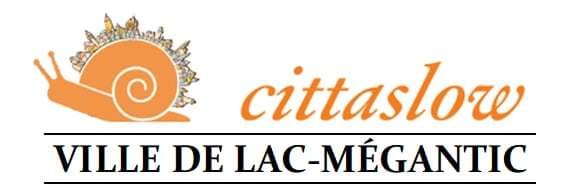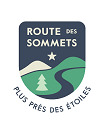What to do?
- home
- what to do?
- slow tourism in the mégantic region
Slow tourism in the Mégantic region
819-583-5515
1 800-363-5515
Benefiting from a relatively pristine natural environment, the Mégantic region, according to its MRC du Granit, has been able to preserve its biodiversity over the millennia thanks to the protection provided by its inhabitants, and this for nearly 12,500 years. Involved in numerous environmental protection actions and in a regional plan for sustainable development, the latter, through its actors and inhabitants, even offers a collaborative open laboratory on its biodiversity offer and on its sustainable actions with the aim of completion of an inclusive ecological civilization.
With this 12,500-year history of occupation and the inclusive style of its civilization, the region has been able to develop products in its own image and has even adhered to internationally recognized protection concepts.
Thus, with memberships in Cittaslow, initiator of slow tourism, in the International Dark-Sky Association, protector of starry skies, and in the development of a tourist route, Route des Sommets, open to several types of users, the region is destined for its promised land, a land of innovation, humanity and conservation.
1. Lac-Mégantic, the first French-speaking city Cittaslow in North America
Cittaslow, what is it?
This international network brings together 236 cities of less than 50,000 inhabitants in 30 countries, including 4 in Canada including Lac-Mégantic: Cowichan Bay and Naramata (BC) and Wolfville (NS). Cittaslow International was born in Italy in 1999, inspired by the Slow Food movement which promotes, among other things, healthy local food, the pleasure of eating and culinary traditions.
Cittaslow towns…
- recognize the pleasure of taking the time,
- preserve the quality of life
- strengthen social ties and ties with nature
- guide their choices in a spirit of sustainability
2. First Mont-Mégantic International Dark Sky Reserve
Continuing the efforts of numerous initiatives to fight light pollution and protect the nighttime environment, the Mont Mégantic region became the very first International Dark Sky Reserve certified by the DarkSky International in 2007.
Centered on the Mont-Mégantic National Park and Observatory, the Mont-Mégantic International Dark Sky Reserve currently measures about 5,300 square kilometres. In order to include the main sources of light pollution from the surrounding area, the Reserve's territory covers an area of approximately 50 km of radius around Mont Mégantic.
This includes the 14 municipalities of the Haut-Saint-François RCM to the west and 19 municipalities of the Granit RCM to the east. Located 60 km to the west, the city of Sherbrooke is also part of the Dark Sky Reserve and is a very important partner.
The process leading to the designation of the International Dark Sky Reserve has contributed to the development of strong regional expertise in outdoor lighting management. The implementation of regulations for outdoor lighting and the involvement of the 34 municipalities of the Reserve strongly contributed to the adequate control and reduction of light pollution, which had greatly increased in previous decades. Thanks to the initial conversion of thousands of luminaires, light pollution at the core of the Reserve has been reduced by more than a third while saving nearly 2 gigawatt-hour of electricity per year for the region.
Following the creation of the Mont-Mégantic International Dark Sky Reserve, new reserves certified by DarkSky International have been created around the world. In addition, many cities and parks have followed the pioneering city of Flagstaff in Arizona and the Natural Bridges National Monument in Utah and are now part of the Dark Sky movement.
3. Discovery of the Summit Drive (Route des Sommets)
Located in the heart of the first International Dark Sky Reserve, the Route des Sommets invites you to discover striking panoramas of imposing mountains, majestic lakes and a sky of thousands of stars. No need to elaborate further, the website speaks for itself!
Website: Summit Drive (Route des Sommets)







